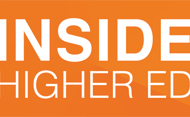Struggling to Fill a Dangerous and Growing Labor Gap

Inside Higher Ed
Sara Weissman
November 4, 2021
Hospitals across the country continue to hemorrhage nurses as many retire or leave the profession exhausted and stressed out after more than a year and a half of tending to sick and dying patients infected with the coronavirus.
Would-be nursing students appear eager to fill the gaps — enrollment in nursing programs over all is rising — but colleges and universities are struggling to meet the demand. They are hampered from expanding their programs by high costs and limited budgets, a shortage of nursing faculty members, and insufficient facility space to accommodate more students.
Enrollment in bachelor’s degree programs in nursing rose 5.6 percent last year, according to the latest enrollment data from the American Association of Colleges of Nursing. Enrollment in master’s degree programs rose about 4 percent, and in doctoral nursing programs it increased almost 9 percent.
“With the pandemic ushering in a period of unprecedented change and innovation in higher education, schools of nursing moved decisively to adapt their programs to ensure a steady supply of nurses needed to join the fight against COVID-19,” Susan Bakewell-Sachs, chair of the association’s Board of Directors, said in a press release.
While she and her colleagues were pleased to see “across-the-board increases in nursing school enrollments,” they’re also aware that the numbers could have been far greater.
The association also reported that nursing schools turned away thousands of qualified applicants last year — more than 80,521 people at four-year institutions alone — because of limited resources, faculty shortages and space constraints.
Continue Reading
Share







